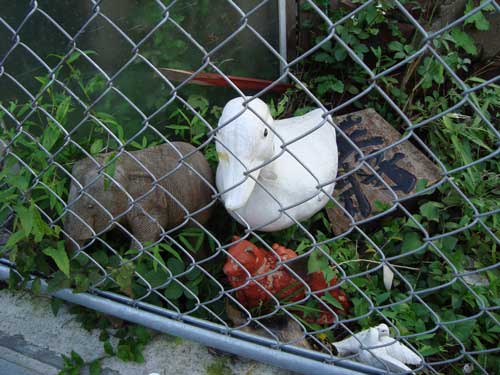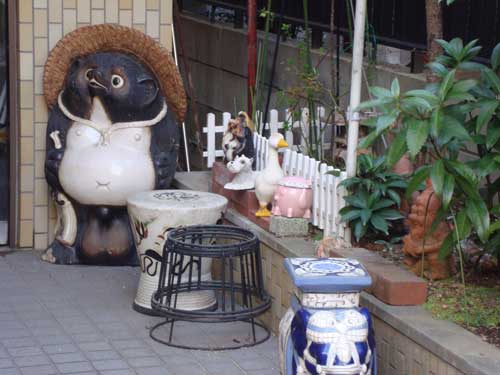
What do you think of animals as garden ornaments? It seems that the desire to populate urban areas with animals goes hand-in-hand with cultivating plants. Does it add to urban life or detract?
A sustainability entrepreneur friend recently told me how much he dislikes the “clutter” and bad taste of old ladies using styrofoam planters for street pots. I imagine he would take a similarly dim view of animal ornaments.
There is a sometimes ambiguous line between trash and art, the living and the never animate. I wonder if the garden animals are dissimilar from the public space plants: a way to take ownership of the street, to make public space personal, “alive,” and magical. They can also be chaotic or unattractive.
Below is a statue of “tanoki,” a popular if somewhat obscene racoon figure of myth. I like how he is accompanied by a duck, elephant, dog, elf, two smaller tanokis, and a white picket fence.



